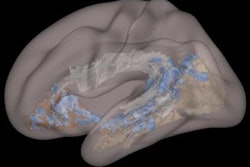Dr. Ferdinand Seith from the University of Tübingen in Germany and colleagues evaluated pseudocontinuous arterial spin labeling (ASL) and true fast imaging with steady-state precession (true-FISP). They used these two sequences to assess lung perfusion at 1.5 tesla and to evaluate a free-breathing examination strategy.
The researchers enrolled 10 volunteers (mean age, 31 ±7 years) who underwent 1.5-tesla MRI scans with pseudocontinuous ASL and true-FISP imaging of the lung. The subjects were scanned during a timed breath-hold and when breathing freely to image the pulmonary trunk during the systole phase of the heartbeat, when the heart muscle contracts and blood enters the arteries.
Using the two MRI sequences, Seith and colleagues were able to acquire a high perfusion signal in all subjects, with image registration creating high-quality images, even in the free-breathing mode. Perfusion values also were in good accordance between the timed breath-hold and free-breathing phases.
The group concluded that pseudocontinuous ASL with true-FISP data acquisition can produce high-quality perfusion images of the lung with either breathing protocol. What's more, it can do so without the need for contrast and can provide significant clinical information for a variety of lung diseases.



















